Stuart Bates’ article on “Ellwood’s Air Chamber Helmet” from July 5th 2012 describes Ellwood´s patent for a hat suitable for tropical regions. Whatever the shape – the idea is always executed in the same way. There are two shells that do not meet and form an “air chamber” – ventilated by holes or not – where the air is used as isolation against heat. Theoretically, a fine idea – but, as Stuart notes correctly: “There is no provision for the escape of heat, emanating from the wearer’s head, out of the inner shell which must have lessened the overall effectiveness of the design.” Ellwood´s must have had the same thought and here is an example of an Ellwood helmet where their own patent is altered.
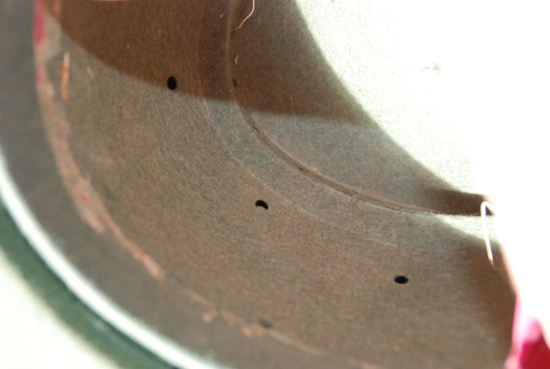
The interior of the helmet showing the ventilation holes from the outer shell to the inner shell. (Collection of Roland Gruschka)
How? Both shells are connected on top. The inner shell meets the outer one some inches away from the ventilation hole on top – leaving a space about the size of the maker’s label where there is no more air chamber formed but only one layer of felt left – with the top ventilation hole in its centre. Eyelets in the label now allow direct ventilation above the head. In addition, there are rows of holes in the middle of the inner shell and on top near to the spot where the shells meet.
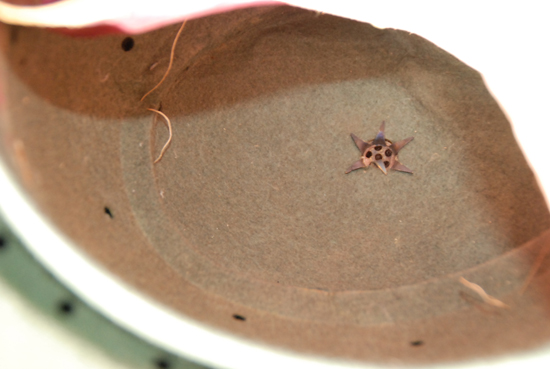
Another shot of the interior illustrating the only way for air to be ventilated through the top ventilator cap is through the inner shell. (Collection of Roland Gruschka)
Besides the ventilation of the head, this variation may have been introduced to make this headwear more durable. The idea of two shells not connected at all might give a top hat enough steadiness as it has a cylinder as the outer shell. But if this Ellwood helmet – consisting of two half bowls – did not have the shells connected on top and be put on a table the wrong side up – that means on its top – it would get dented; dents that could not be removed with pressure from the inside. Pressure here means just a finger-tip – but the dent cannot be reached because of the inner shell. Now imagine a permanently dented hat in a world where Gentlemen have worn plain clothes and could afford and did indeed employ an army of servants to maintain them – this thing is unlikely to have become a successful product.
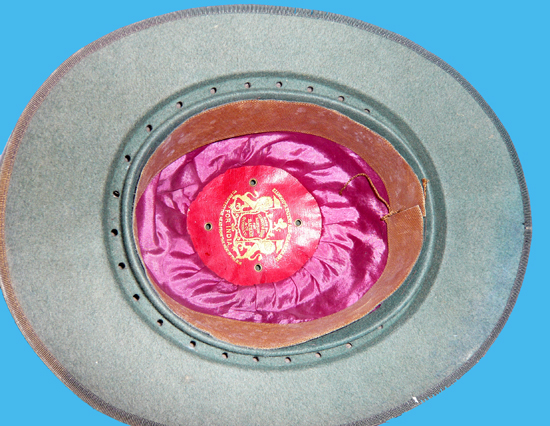
This photo shows the ventilation holes into the outer shell. Also of interest is that the helmet tapers to the rear. (Collection of Roland Gruschka)
When was that helmet produced and for what purpose? Both, civil and military types of sun helmets are known with hooks for a chinstrap. A helmet with hooks can therefore be either civilian or military. A helmet without hooks does not make sense for military use – neither for mounted soldiers or other manoeuvers executed with fast movement – so this helmet, having no hooks, is definitely civilian. The label states Badham & Co., Bombay as the retailer.
This hat was never worn. The sweatband is only attached with one stitch of thread and open. I suppose it was delivered to the retailer like this and then “customized” – maybe with pieces of cork, cut as thick as was required according to the size of the buyer´s head. At least – we can only wish the wearer of this hat that he had got this additional circulation of air! The sweatband is not leather but a fabric, that should look like leather but was much cheaper. It is linen with an embossed structure. This partly replaced the use of leather as book cover material in the 1840s to 1870s. Compare this sweatband to a typical book cover of this period (in this case published 1859).
Should that be an indication that the helmet dates from that period? Could be, but cannot be told for sure, as so often is the case with civilian pith helmets. About the decoration: according to the former owner this Ellwood came from a theater storeroom and although the puggaree is typical for the period before the flat folded ones came into fashion, it might be theater-made. The neck flap is khaki on top and dark green on the lower side – an effort in detail a theater tailor has no reason to make – so it probably came with the helmet.
Finally, a contemporary quote on Ellwood´s helmets by Charles J. Wills, late one of the Medical Officers of her Majesty´s Telegraph Department in Persia, from In the Land of the Lion and Sun – or Modern Persia. Being Experiences of Life in Persia from 1866 to 1881, London 1891 (First published 1883).
“The sun in Persia is a very insidious enemy. Many cases of sun-apoplexy each year are seen, and I had a fixed rule that, except for evening rides, my wife and I always wore an Elwood’s sun-helmet, and this is the only real way to preserve oneself. All other things but the topi are valueless, unless one uses the hideous pith hat, or resorts to the turban. Of course in India these precautions are still more necessary. I don’t know if these sun hats are made for children. They are very necessary if children are allowed to go at all in the sun, and they will go, and natives will let them. But really good-looking riding-hats are turned out for ladies. My wife had a solar riding-hat a la Gainsborough, that was almost becoming; so that ladies at least have no excuse. I was constantly warning those under my care of the danger of little caps, billycocks, etc., but in any cases I was looked on as a “Molly,” though I felt it my duty to press my warnings. Of another thing I am convinced, that the powerful effect of the sun is much lost sight of in Europe, and I look on a bright helmet of metal, unless air-chambered as an invention of the devil, and pity the poor Life Guards, etc.; the horsehair, however, happily saves them a little.”
Roland Gruschka

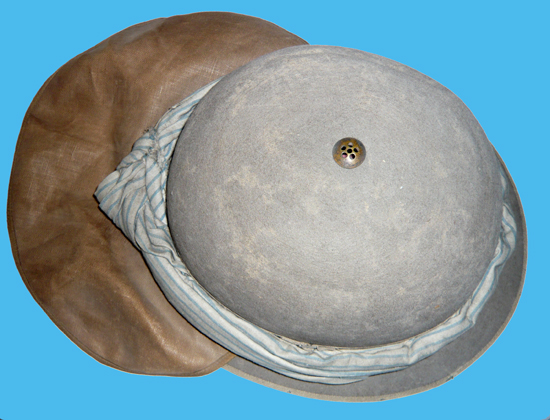
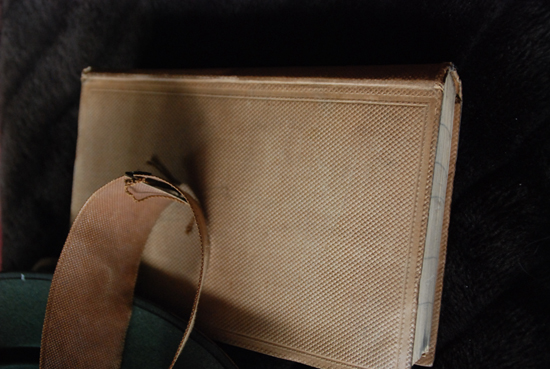
Well presented article. Very interesting to see an actual Ellwood’s Air Chamber Helmet. The Ellwood’s patent can be quite confusing as to how the air chamber actually worked.
A splendid article on a very rare helmet. The variation to the “original” Ellwood’s patent is of particular interest.
Stuart